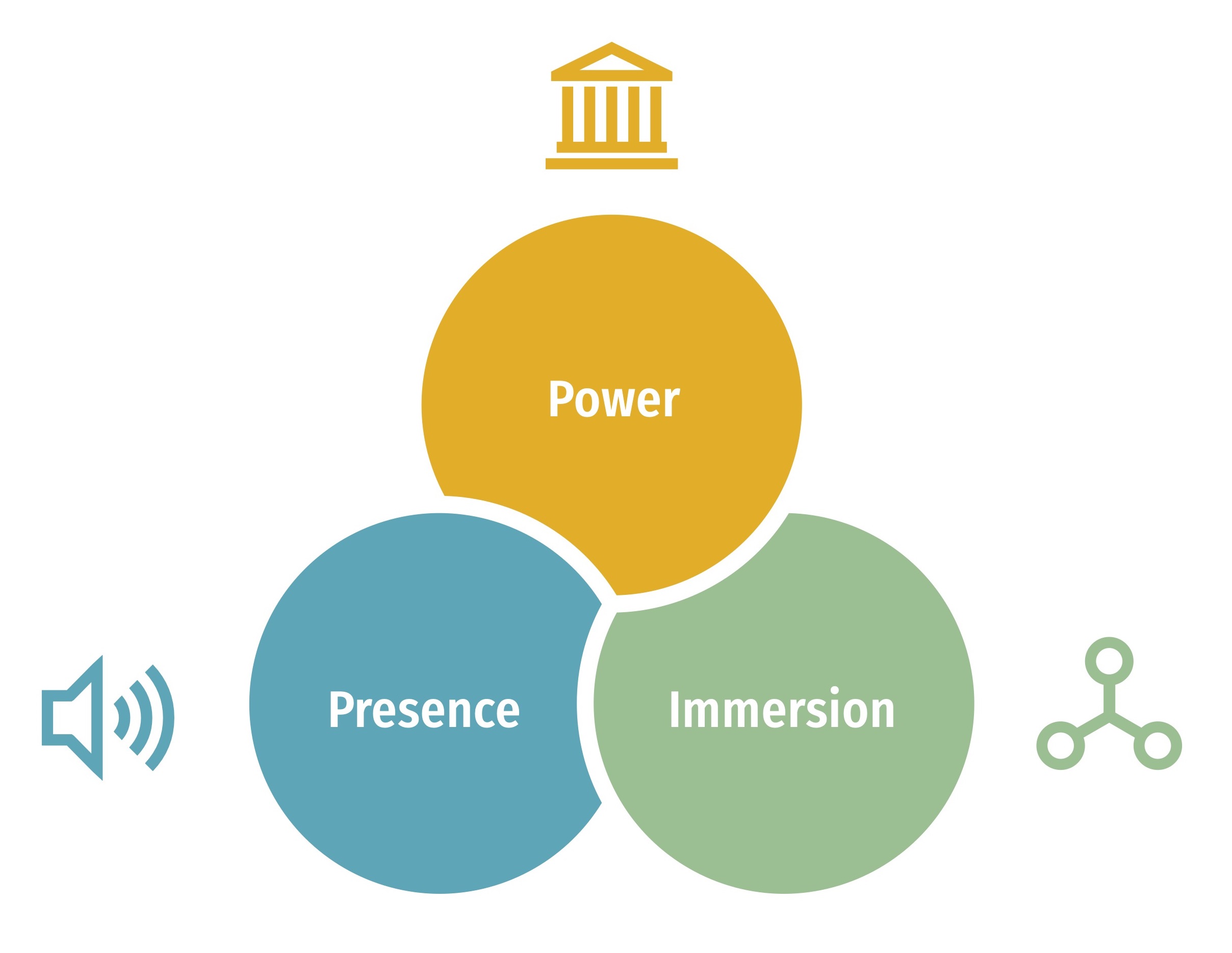What is strategic communications?
This Strategic Communications Incubator resource defines ICPA's approach to strategic communications approach as a theory of change, outlining the steps involved in implementing narrative change at scale. Explore the three guiding principles that underlie the theory of change.

1st level target – Presence
This first level in the theory of change is presence. Presence is achieved using continuous and focused social and traditional media work and campaigns to get new narratives known. The target is to make your narrative one of the dominant stories around a particular issue. To achieve this, advocates need to create surround sound, volume, velocity and visibility in the public debate that reaches and resonates with a broad set of target audiences. Presence is built to create the public support and political space for progressive policy change, i.e. presence is a means not an end.
2nd level target – Immersion
The second target for strategic communications is immersion. The ultimate aim of immersion is changing the unwritten rules of culture. Narratives must be brought to life in people’s everyday lives, not just circulating in the media they consume. They need to be anchored in the broader culture in a way that shifts norms, behaviour and the boundaries of cultural acceptability, e.g. the recent impact of the #MeToo movement.
Immersion interventions – that aim for new narratives to be socialised and internalised through deeper experiences and interactions – include2 :
- taking tried and tested narratives (from presence campaigns) to social cohesion work, community engagement or service provision;
- developing events or experiences in which people from different backgrounds come into contact with one another3 for meaningful exchanges;
- and going as far as feeding these new narratives into existing cultural content, for example, in TV and film (often known as cultural placement or cultural strategy4 ).
These examples illustrate that these participatory – often offline – narrative change interventions move from getting the narrative known to getting the narrative owned. They create the conditions for discovery5 of a new narrative: giving people experiential ways to encounter the narratives for themselves, find their own entry points, and build ownership.
In the following table, these points are summarised and contrasted to the key points about Presence:
| PRESENCE | IMMERSION |
|---|---|
| From getting the narrative known... | ...to getting the narrative owned |
| From getting the message out... | ...to getting the message in |
| From dissemination... | ...to creating the conditions for discovery |
3rd level target – Narrative Power
The third target is power, i.e. changing the written rules of policy/law. If advocates succeed in building the widespread presence of narratives and embed them deeply in the cultural expectations of a broad spectrum of the community, this in turn will create the public support and political backing that creates the conditions and opportunity for progressive and sustainable policy change. Hence, co-ordinating public narrative change work with more traditional policy or legal advocacy is key to delivering the target change. After all, what is the point of narrative change if it doesn’t translate into more sustainable structural/systemic change?
Explore the three guiding principles of strategic communications that underlie this theory of change.
- 1Our definition builds on the following sources: Robinson, R. (2018). Changing our narrative about narrative: the infrastructure required for building narrative power. Color of Change USA; Robinson, R., (2017). Video of Key note speech: Are we getting this right? Personal Democracy Forum; International Centre for Policy Advocacy (2021) Video: Strategic Communications in Action Series - Case 3: Frank Sharry (America's Voice).
- 2Many progressive practitioners successfully employ a variety of these approaches: The Great Get Together; Welcoming America, Opportunity Agenda, Color of Change; and CLAIM Allianz members through the RESET project.
- 3Key literature: Everett, J. (2013). Intergroup contact theory: past, present and future. The Inquisitive Mind Blog; Welcoming America (2019). Making inclusion a social norm in America; Welcoming America (2020). Bridging Divides, creating community: arts, culture and immigration.
- 4Key literature: Chang, J., Manne, L. and Potts, E. (2018). A more perfect story: a conversation about cultural strategy. Medium; Power California (2019). Cultural Strategy: An Introduction and Primer; The Center for Cultural Power (2020). Making Waves: A Guide to Cultural Strategy; Pop Culture Collaborative (2020). From Stories to Systems: Using a Narrative Systems Approach to Inform Pop Culture Narrative Change Grantmaking (see pp.4-5 on immersion).
- 5The Center for Cultural Power, ibid. p.13-14.